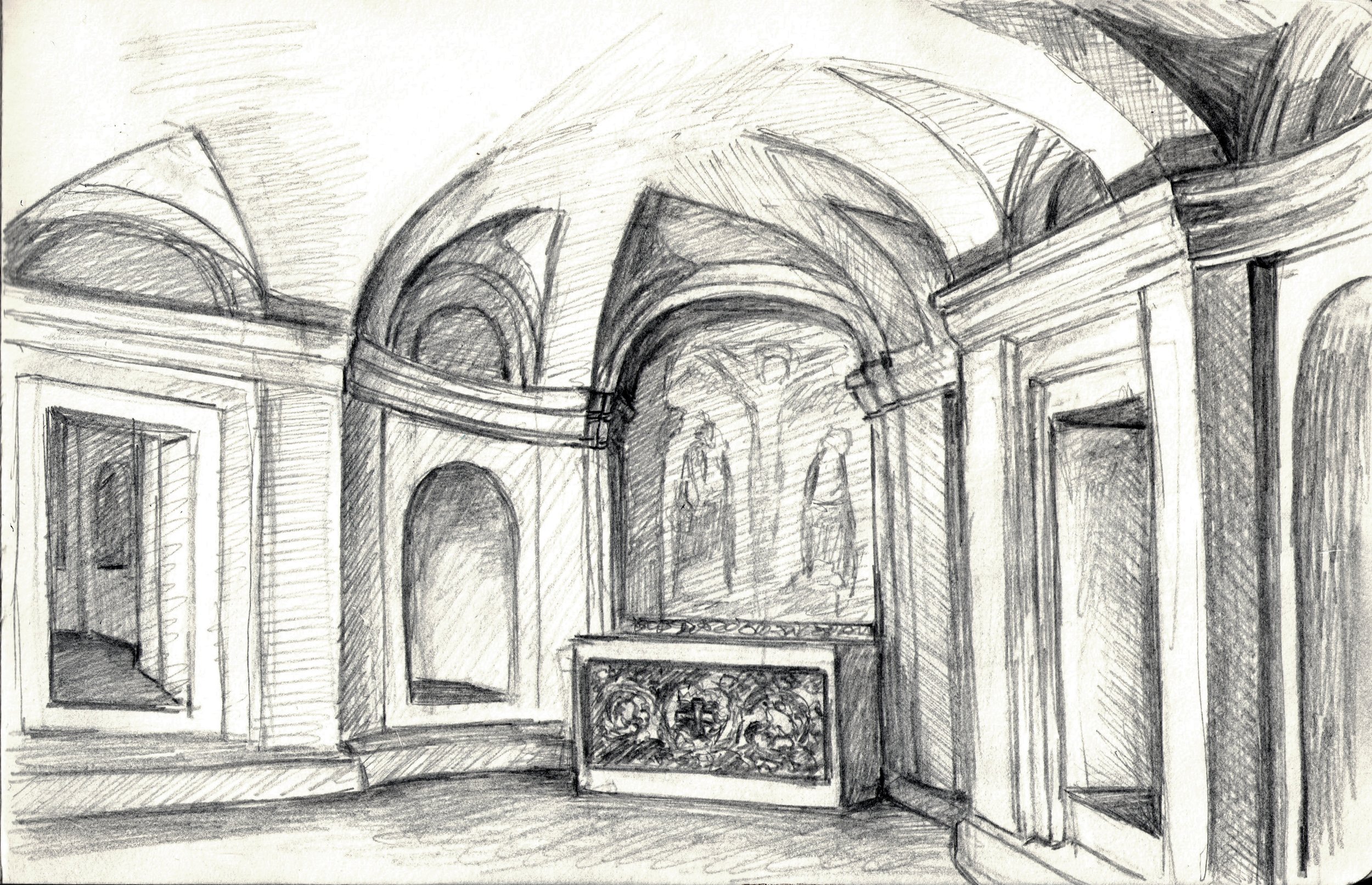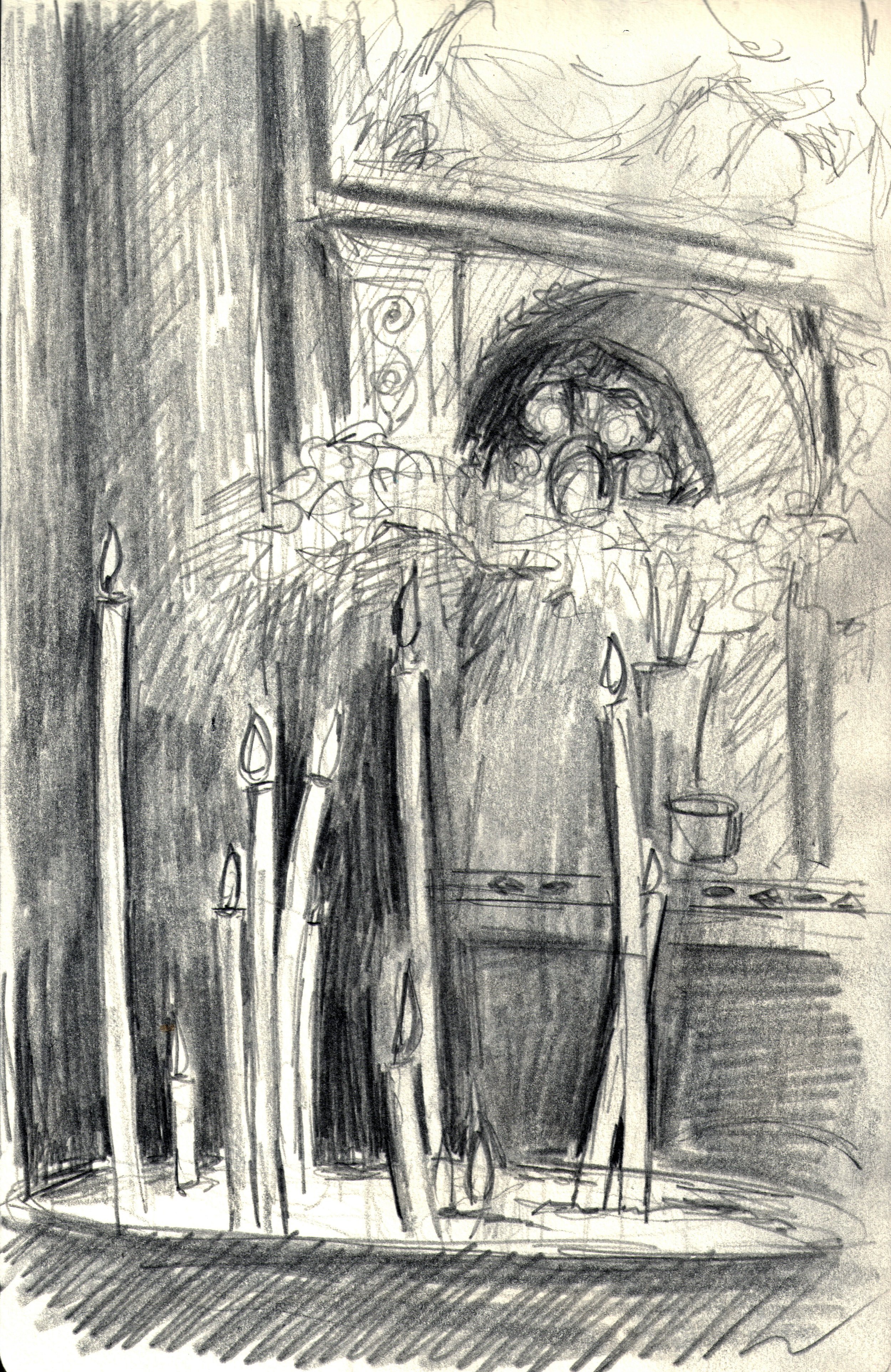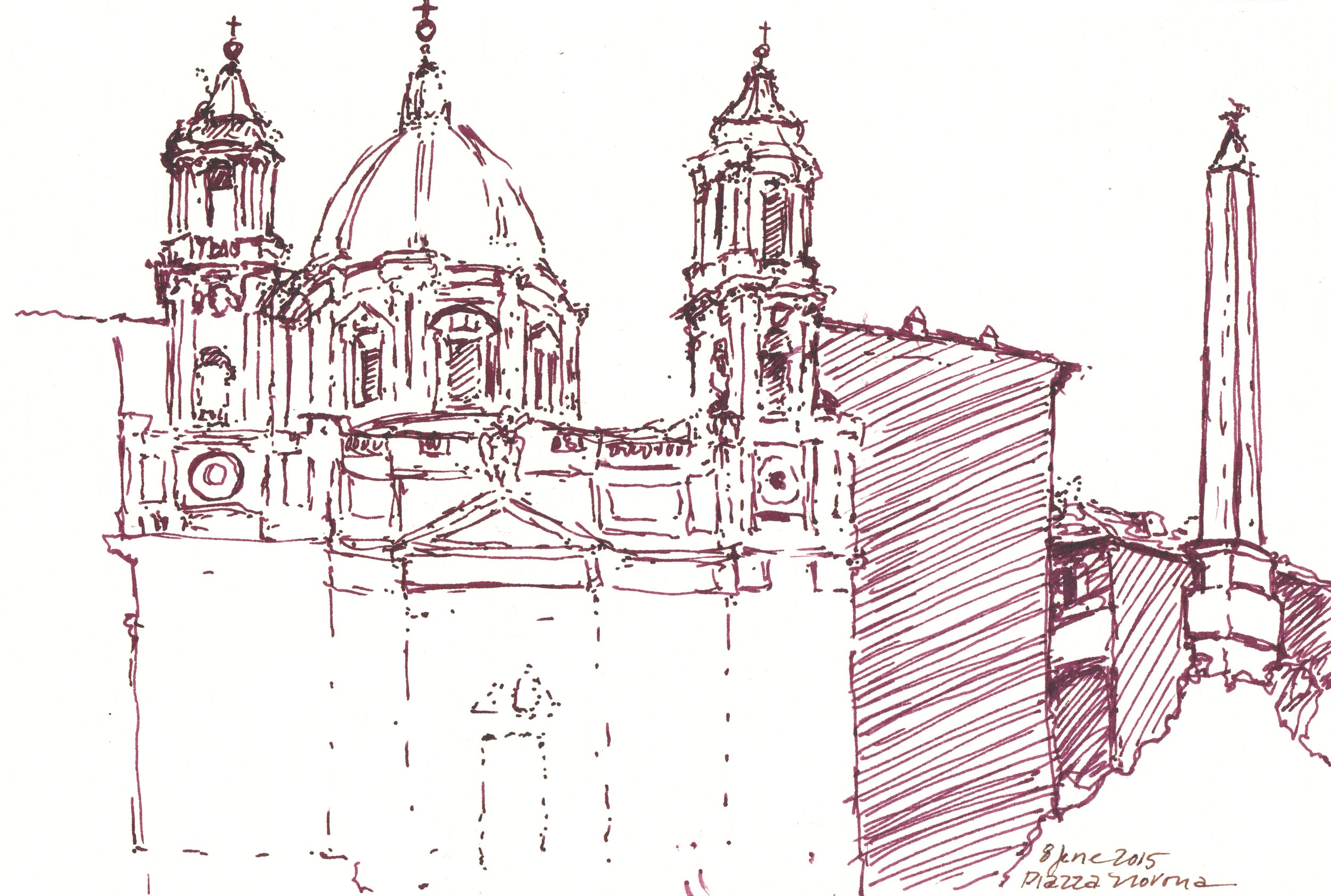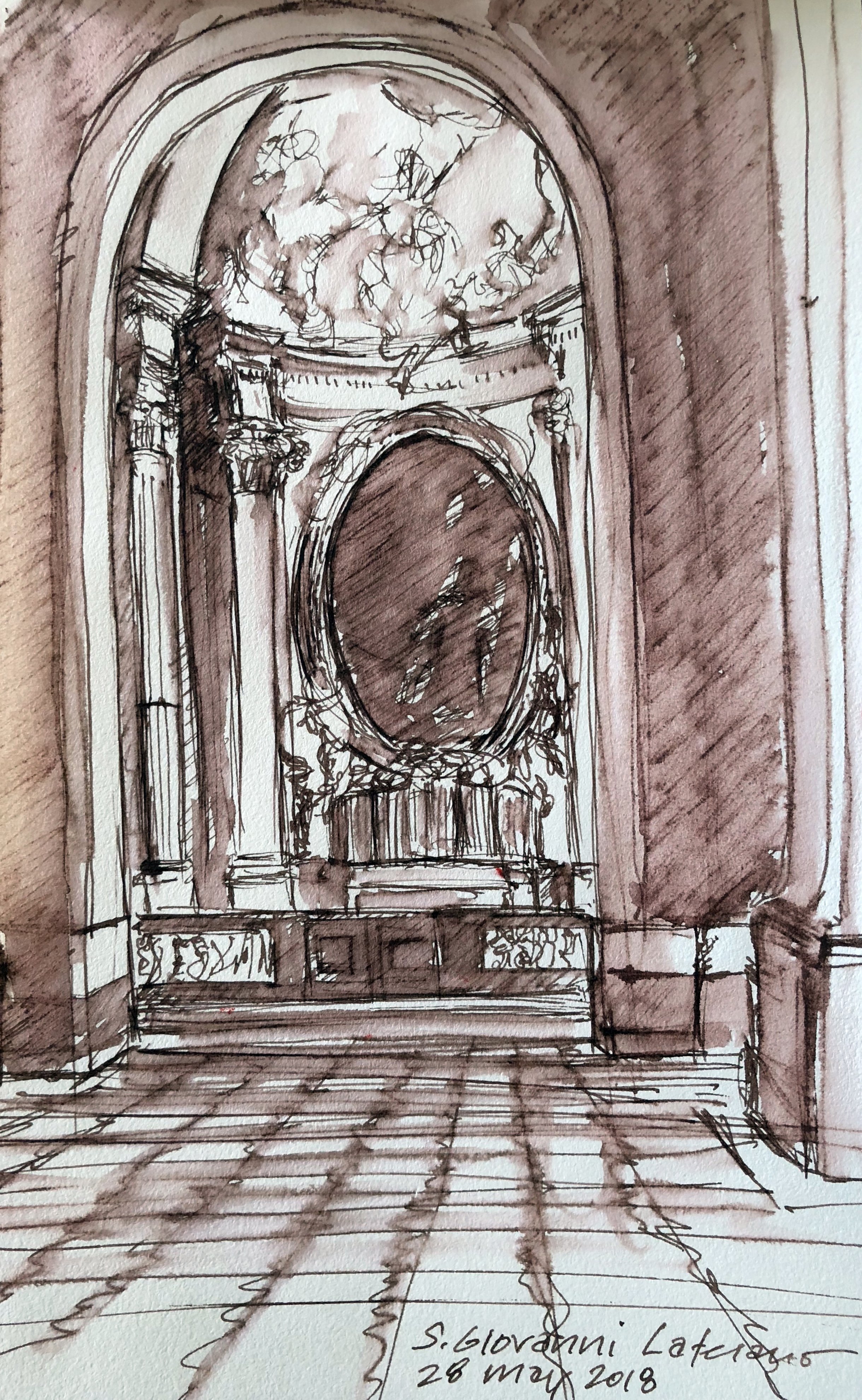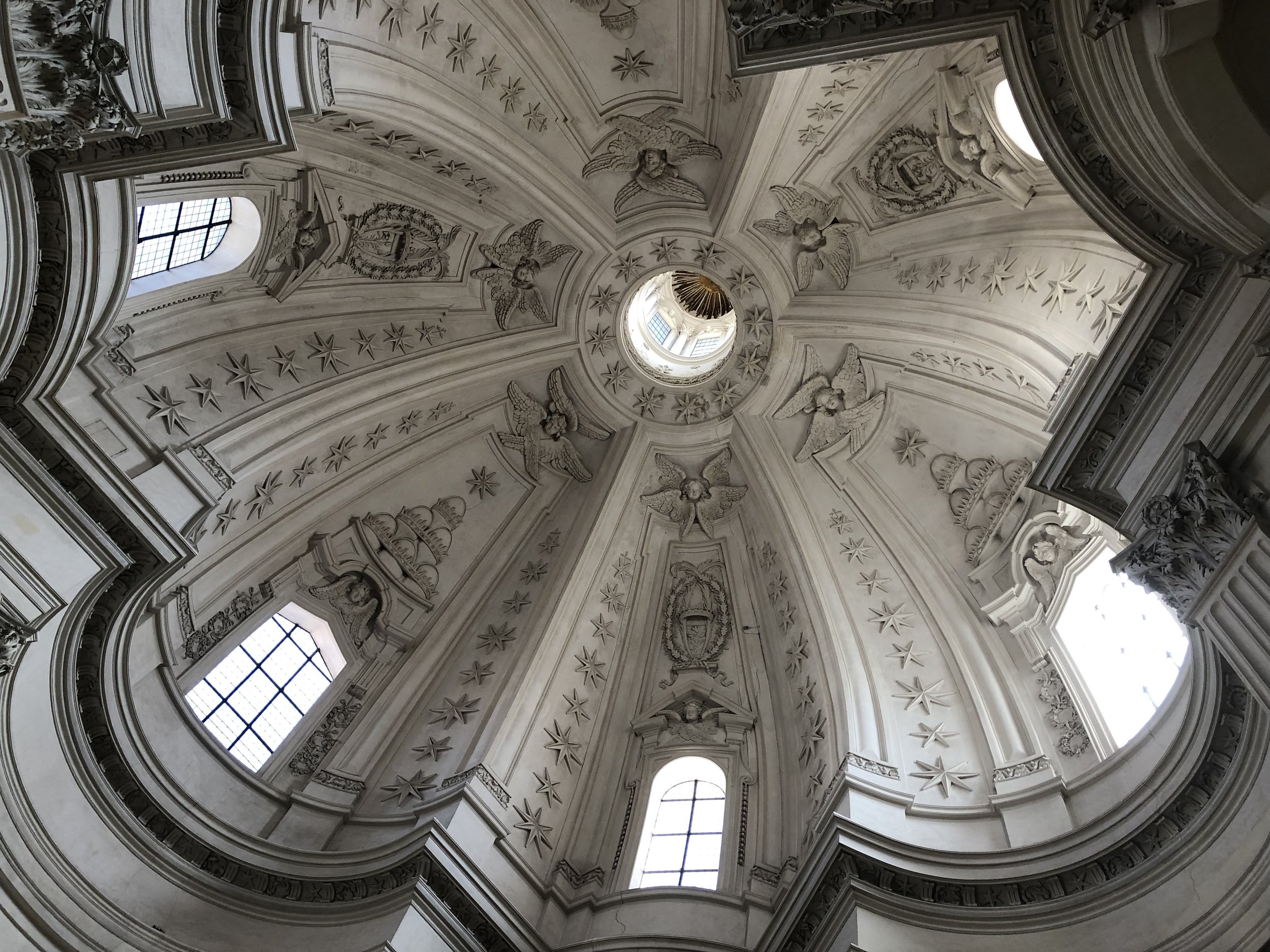
Baroque Rome
Rome is known for its layered architectural history, but of any movement that colors one’s experience of Rome, is that of the Baroque. This has much to do with the fact that the Baroque was born or “created in Rome”[1] (approximately 1620-70). It grows out of the late Italian Renaissance with Mannerist influences as part of the Counter Reformation. Its’ architects “preferred curves to straight lines and complex forms to those which were regular and simple.”[2] It colors everyone’s experience of Rome because most buildings from prior periods have Baroque additions or embellishments added during the time of the Counter Reformation. There is nothing like the curvaceousness and complexity of these structures. Exploring them first had with a sketchbook is exciting, as drawing requires more time to observe the geometric complexities in space.
[1] Anthony Blunt, Roman Baroque, (London: Pallas Athene, 2018) 7.
[2] Blunt, Roman Baroque, 13
Photo: Sant' Ivo alla Sapienza, by Borromini: Dome
San Carlo alle Quattro Fontane: by Borromini, Interior, 2015, Ink on paper, 5 x 8 Inches
San Carlo alle Quattro Fontane: by Borromini, Dome, 2018, Ink on paper, 5 x 8 Inches
San Carlo alle Quattro Fontane: by Borromini, Crypt, 2013, Graphite on paper, 5 x 8 Inches
San Carlo alle Quattro Fontane: by Borromini, Cloister, 2017, Ink on paper, 5 x 8 Inches
San Carlo alle Quattro Fontane: by Borromini, Crypt, 2011, Ink on paper, 5 x 8 Inches
Sant'Andrea al Quirinale, by Bernini, Interior, 2018, Ink on paper, 5 x 8 inches
Sant'Andrea al Quirinale, by Bernini, Interior, 2015, Ink on paper, 5 x 8 inches
Sant'Andrea al Quirinale, by Bernini, Interior, 2011, Ink on paper, 5 x 8 inches
Il Gesu: Altar of St. Ignatius (side view), 2017, Ink on paper, 5 x 8 inches
Il Gesu: Altar and Tomb of St. Ignatius, 2011, Ink on paper, 5 x 8 inches
Il Gesu: Hight Altar, 2011, Ink on paper, 5 x 8 inches
Il Gesu: Side Chapel, 2015, Ink on paper, 5 x 8 inches
Il Gesu: Chapel of Madonna della Strada, 2013, Graphite on paper, 5 x 8 inches
St. Peter's Basilica: Facade, 2013, Ink on paper, 5 x 8 inches
Sant'Agnese in Piazza Navona, 2015, Ink on paper, 5 x 8 inches
Santa Maria della Consolazione, 2015, Ink on paper, 3.5 x 5 inches
Piazza Farnese, 2011, Graphite on paper, 5 x 8 inches
Unknown Figure in Niche, 2013, Graphite in paper, 5 x 8 inches
San Giovanni in Laterano: Side Chapel by Borromini, 2018, Ink on paper, 5 x 8 inches
Sant' Ivo alla Sapienza: Steeple, 2019, Ink on paper, 3.5 x 5 inches


